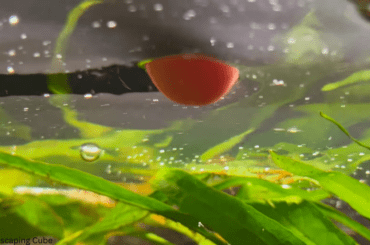The mesmerizing world of aquariums brings joy and calmness, but it is not without its challenges.One common adversary that aquarium enthusiasts encounter is Velvet Disease, a condition caused by a parasitic protozoan known as Oodinium. In this comprehensive guide, we will delve into the intricate details of Velvet Disease, exploring its overview, symptoms, causes, diagnosis, preventive measures, and treatment options.
What is Velvet Disease?
Velvet Disease, scientifically known as “Oodinium”,”Gold Dust Disease”, is a parasitic infection that can affect freshwater and marine fish alike. Oodinium is a protozoan parasite that belongs to the dinoflagellate group. These microscopic organisms are opportunistic, thriving in aquarium environments where stress levels and compromised immunity make fish more susceptible.
The reason behind Velvet Disease, Oodinium, is a single-celled organism that embeds itself on the skin and gills of fish.With a characteristic golden or rust-colored appearance, the protozoan resembles a dust-like powder, earning the disease its common name. Oodinium invades the mucous membranes of fish, causing irritation and compromising their overall health.

Symptoms
Identification of Visible Signs:One of the hallmark signs of Velvet Disease is the appearance of golden or rust-colored dust-like spots on the skin, gills, and fins of affected fish. These spots are a manifestation of the protozoan parasites attaching themselves to the fish’s body.
Recognition of Behavioral Changes:In addition to the distinctive physical symptoms, fish afflicted by Velvet Disease may exhibit behavioral changes. Rapid gill movement, often resembling heavy breathing, and lethargy are common behavioral indicators. Fish may become less active, spending more time hiding and showing a decreased interest in food.

Causes and Transmission
Velvet Disease tends to emerge under specific conditions. Stress is a major contributing factor, weakening the immune systems of fish and creating an environment conducive to Oodinium infestation. Factors such as poor water quality, sudden changes in temperature, overcrowding, and improper acclimatization of new fish can elevate stress levels.
The transmission of Velvet Disease in aquariums typically occurs through the introduction of infected fish or contaminated water. Protozoan cysts can remain dormant in the substrate, gravel, or on aquatic plants, waiting for favorable conditions to reanimate and infect new hosts. The rapid transmission emphasizes the importance of proactive measures.
Diagnosis:
Accurately diagnosing Velvet Disease requires careful observation. The distinct golden or rust-colored spots are telltale signs, especially when combined with behavioral changes. However, microscopic examination of skin or gill scrapings may be necessary for a definitive diagnosis.

Early detection is paramount in managing Velvet Disease effectively. As the protozoan multiplies rapidly, prompt identification allows for timely intervention, minimizing the impact on the affected fish and preventing the disease from spreading to other inhabitants of the aquarium.
Preventive Measures
Preventing Velvet Disease involves adopting proactive measures to create an environment that minimizes stress and reduces the likelihood of Oodinium infestation. Regular water changes, maintaining optimal water parameters, and providing a well-balanced diet contribute to overall fish health.
Quarantine is a crucial practice for preventing the introduction of Velvet Disease and other potential threats to your aquarium. New fish and plants should undergo a quarantine period in a separate tank to ensure they are disease-free before being introduced to the main aquarium.
Treatment Options
Several medications are available for treating Velvet Disease, each with its mode of action against the Oodinium protozoan. Copper-based medications are commonly used and have proven effective in eradicating the parasites. These medications disrupt the life cycle of Oodinium, providing relief to infected fish.
During the initial days of copper use, test the water twice daily for copper levels, followed by daily checks for the remainder of the treatment period. Maintaining copper levels between 0.15 and 0.2 parts per million for at least 14 days is commonly recommended. The presence of alkalinity and substrates containing carbonates may impact the absorption and release of free copper in the water
Several crucial points to remember during the treatment of this disease:
- Early detection and immediate treatment are pivotal.
- The Velvet disease is highly contagious.
- Stressed fish are more susceptible to the disease.
- Fish displaying severe skin forms may be too unwell to respond to treatment.
- Adequately sized UV sterilizers can effectively eliminate dinospores.

In conclusion,
Velvet Disease poses a significant challenge to aquarium enthusiasts, but armed with knowledge and proactive measures, it can be effectively managed. By understanding the intricacies of this parasitic infection, recognizing its symptoms, adopting preventive measures, and utilizing appropriate treatment options, aquarists can create a thriving and disease-free environment for their aquatic companions.





